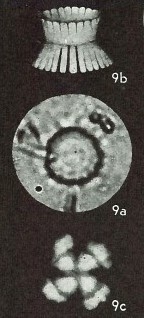Heliolithus riedelii
Set number: 2458
-
1
-
2
-
3
-
4
-
5
-
6
-
7
-
8
-
9
-
10
-
11
-
12
-
13
-
14
-
15
-
16
-
17
-
18
-
19
-
20
-
21
-
22
-
23
-
24
-
25
-
26
-
27
-
28
-
29
-
30
10µm
Set number: 2459
-
1
-
2
-
3
-
4
-
5
-
6
-
7
-
8
-
9
-
10
-
11
-
12
-
13
-
14
-
15
-
16
-
17
-
18
-
19
-
20
-
21
-
22
-
23
-
24
-
25
10µm
Set number: 2460
-
1
-
2
-
3
-
4
-
5
-
6
-
7
-
8
-
9
-
10
-
11
-
12
-
13
-
14
-
15
-
16
-
17
-
18
-
19
-
20
-
21
-
22
-
23
-
24
10µm
Set number: 2461
-
1
-
2
-
3
-
4
-
5
-
6
-
7
-
8
-
9
-
10
-
11
-
12
-
13
-
14
-
15
-
16
-
17
-
18
-
19
-
20
10µm
Set number: 2462
-
1
-
2
-
3
-
4
-
5
-
6
-
7
-
8
-
9
-
10
-
11
-
12
-
13
-
14
-
15
-
16
-
17
-
18
-
19
-
20
-
21
-
22
-
23
-
24
-
25
-
26
-
27
-
28
-
29
-
30
-
31
-
32
10µm
Broken specimen
Set number: 2463
-
1
-
2
-
3
-
4
-
5
-
6
-
7
-
8
-
9
-
10
-
11
-
12
10µm
Set number: 2464
-
1
-
2
-
3
-
4
-
5
-
6
-
7
-
8
-
9
-
10
-
11
10µm
Set number: 2465
-
1
-
2
-
3
-
4
-
5
-
6
-
7
-
8
-
9
-
10
-
11
-
12
-
13
-
14
-
15
-
16
-
17
-
18
-
19
-
20
-
21
-
22
-
23
-
24
-
25
-
26
-
27
-
28
-
29
-
30
-
31
-
32
10µm
In the mobile mount.
Set number: 2466
-
1
-
2
-
3
-
4
-
5
-
6
-
7
-
8
-
9
-
10
-
11
-
12
-
13
-
14
-
15
-
16
10µm
Set number: 2467
-
1
-
2
-
3
-
4
-
5
-
6
-
7
10µm
Set number: 2468
-
1
-
2
-
3
-
4
-
5
-
6
-
7
-
8
10µm
Set number: 2469
-
1
-
2
-
3
-
4
-
5
-
6
-
7
-
8
-
9
-
10
10µm
Set number: 2470
-
1
-
2
-
3
-
4
-
5
-
6
-
7
-
8
-
9
-
10
-
11
-
12
10µm
Set number: 2471
-
1
-
2
-
3
-
4
-
5
-
6
-
7
-
8
-
9
-
10
10µm
Heliolithus riedelii Bramlette and Sullivan, 1961
Emended by Bowman & Varol, 2021: A large (7.0–11.0μm) circular species of Heliolithus constructed of an outward flaring disc and column. The narrowest part of the species appears at the disc-column junction. The narrow central canal exhibits deep depressions at both ends (e.g. distal and proximal). The height of the column is always greater than that of the disc. The disc and column consist of a similar number of segments (about 20–28), and the segments of the disc and column are of similar width.
The extinction lines are dextrogyre in the distal view (e.g. Pl. 43, figs. 9, 13 in Bowman & Varol, 2021), whereas the extinction lines are laevogyre in the proximal view (e.g. Pl. 43, figs. 11, 15 in Bowman & Varol, 2021). When observed through a gypsum plate, the horizontal axis and blue region are aligned on the distal side, but the vertical axis and blue portion are linked on the proximal side. The disc and column are birefringent in side-view and plan-view. The column displays yellowish birefringence colour in plan-view, and the disc and column generate reddish-blueish birefringence colour in the side-view.
Heliolithus riedelii appears structurally different from other species of Heliolithus (e.g. flaring-out character of the disc and column). This species is differentiated from species of Caycedoa based on the diagnostic birefringent pattern of the disc in plan-view (e.g. Heliolithus has the birefringent disc, Caycedoae has a non-birefringent disc in plan view). The distinct flaring-out character observed within the disc and column of Heliolithus riedelii is the diagnostic feature that differentiates the species from Heliolithus aktasii and other Heliolithus species. In some specimens, there appears to be a skinny band at the disc-column interface (Pl. 41, figs. 11, 13, 15; Pl. 44, figs. 3, 7, 19, 23 in Bowman & Varol, 2021). This skinny band is most likely an optical illusion. It is also possible that the specimens were slightly tilted away from us when the photos were taken
Bowman, A. R. & Varol, O. 2021. A Taxonomic Revision of Heliolithaceae - Applications in Resolving the Problematic Calcareous Nannofossil Biostratigraphy of the Paleocene. In: M. Montenary, M. (Ed.). Calcareous nannofossil biostratigraphy of the Stratigraphy and timescales. 6: 43-223.
Bramlette, M. N. & Sullivan, F. R. 1961, Coccolithophorids and related nannoplankton of the Early Tertiary in California. Micropaleontology 7(2): 129-188.
